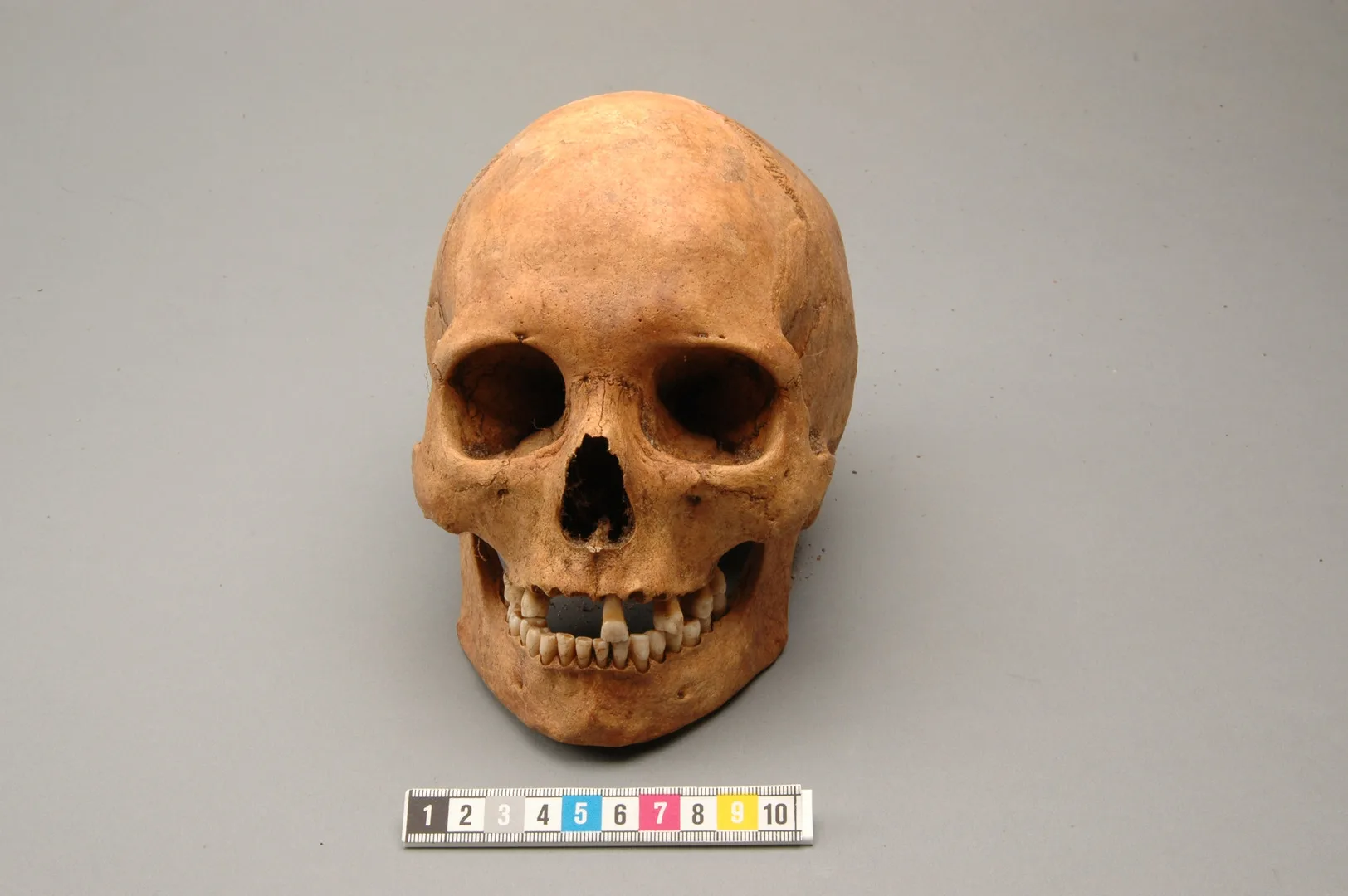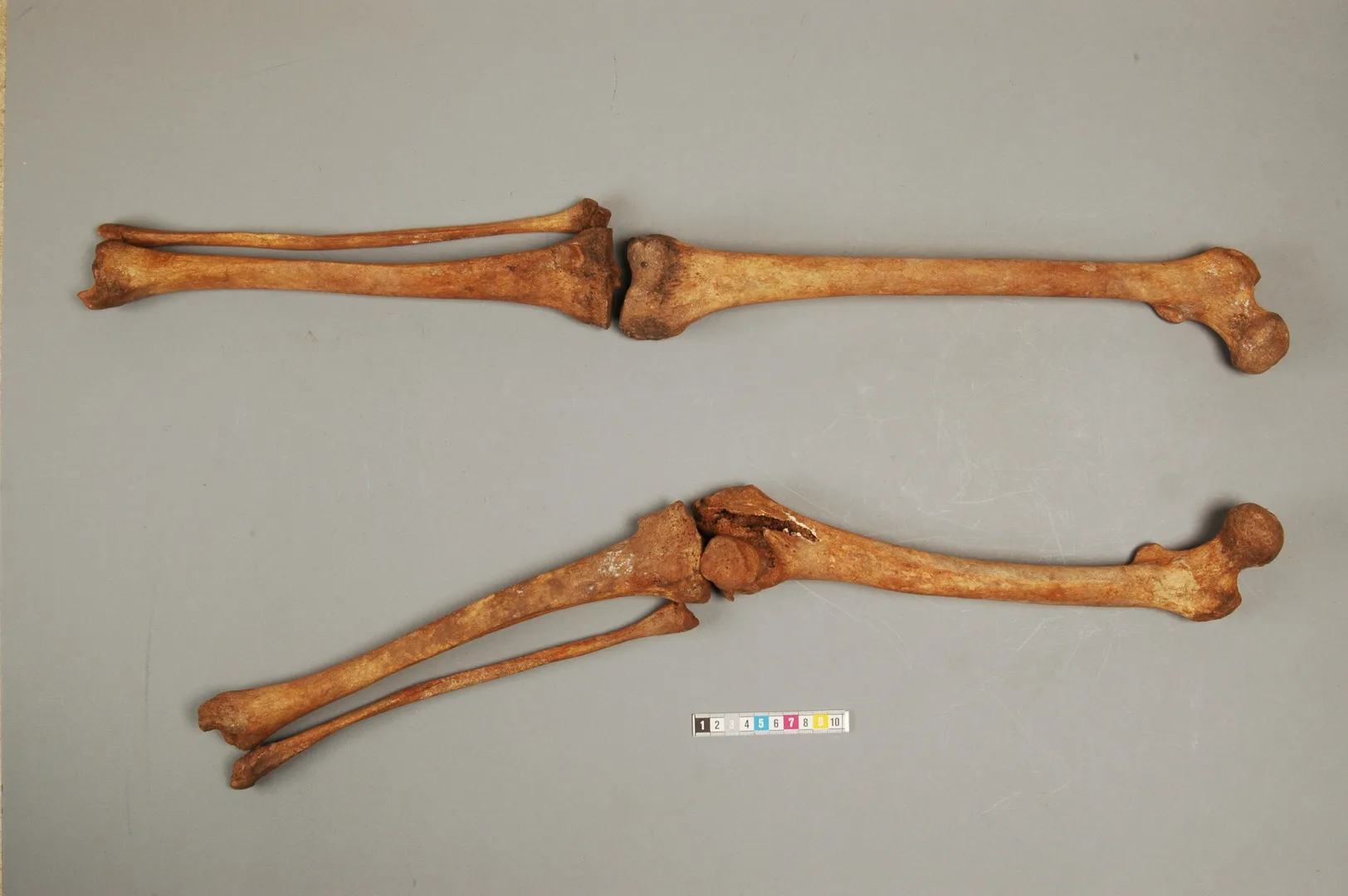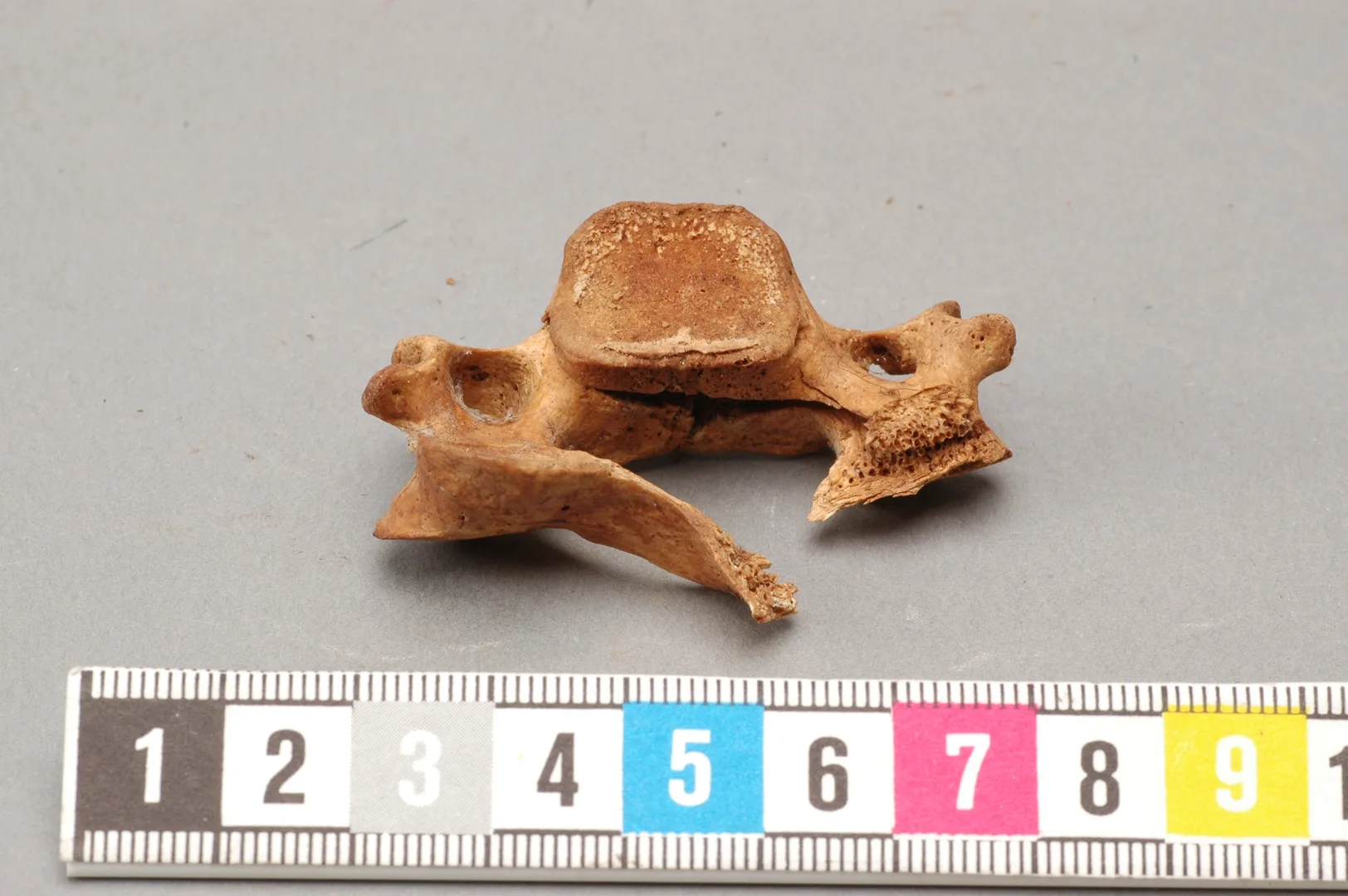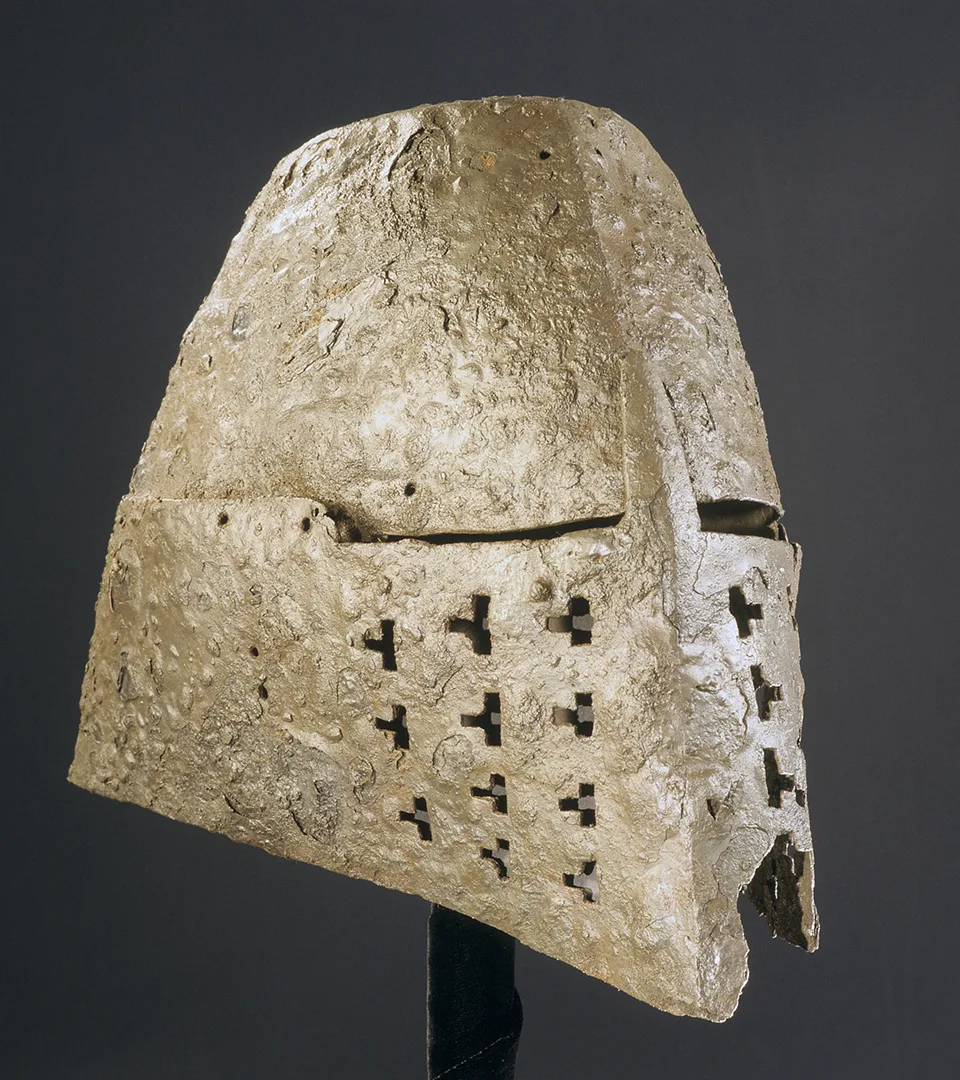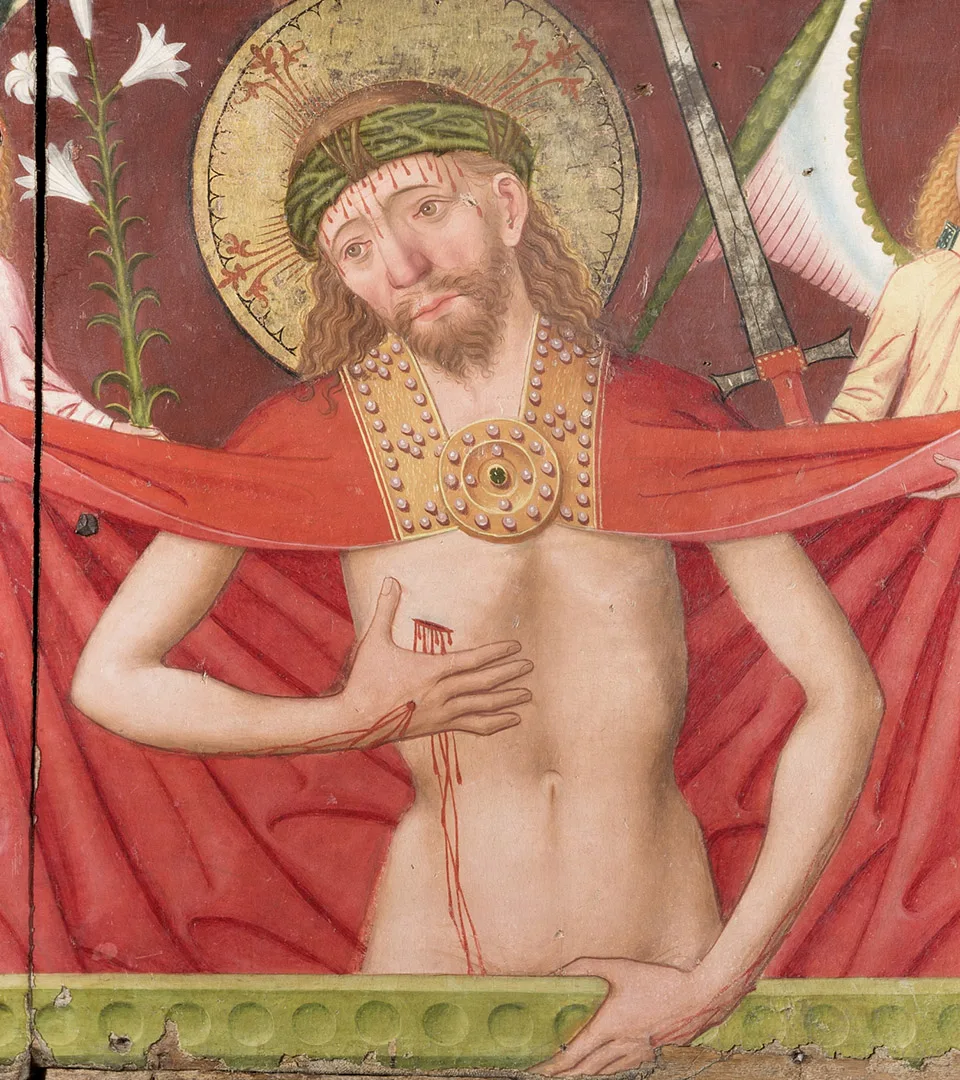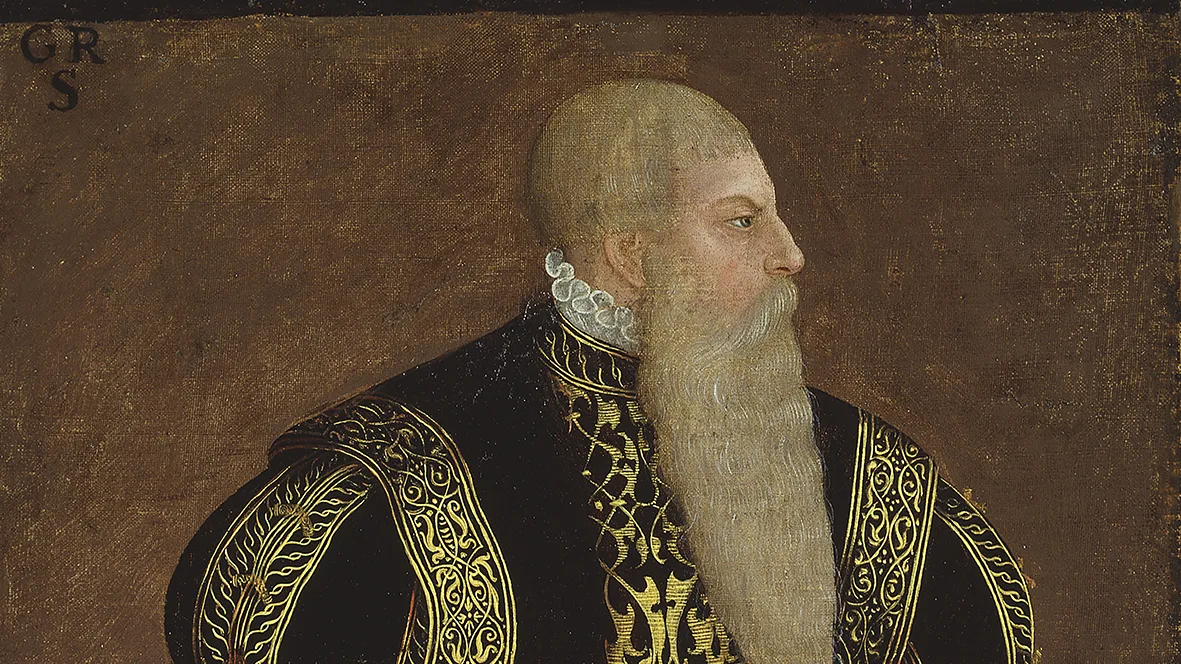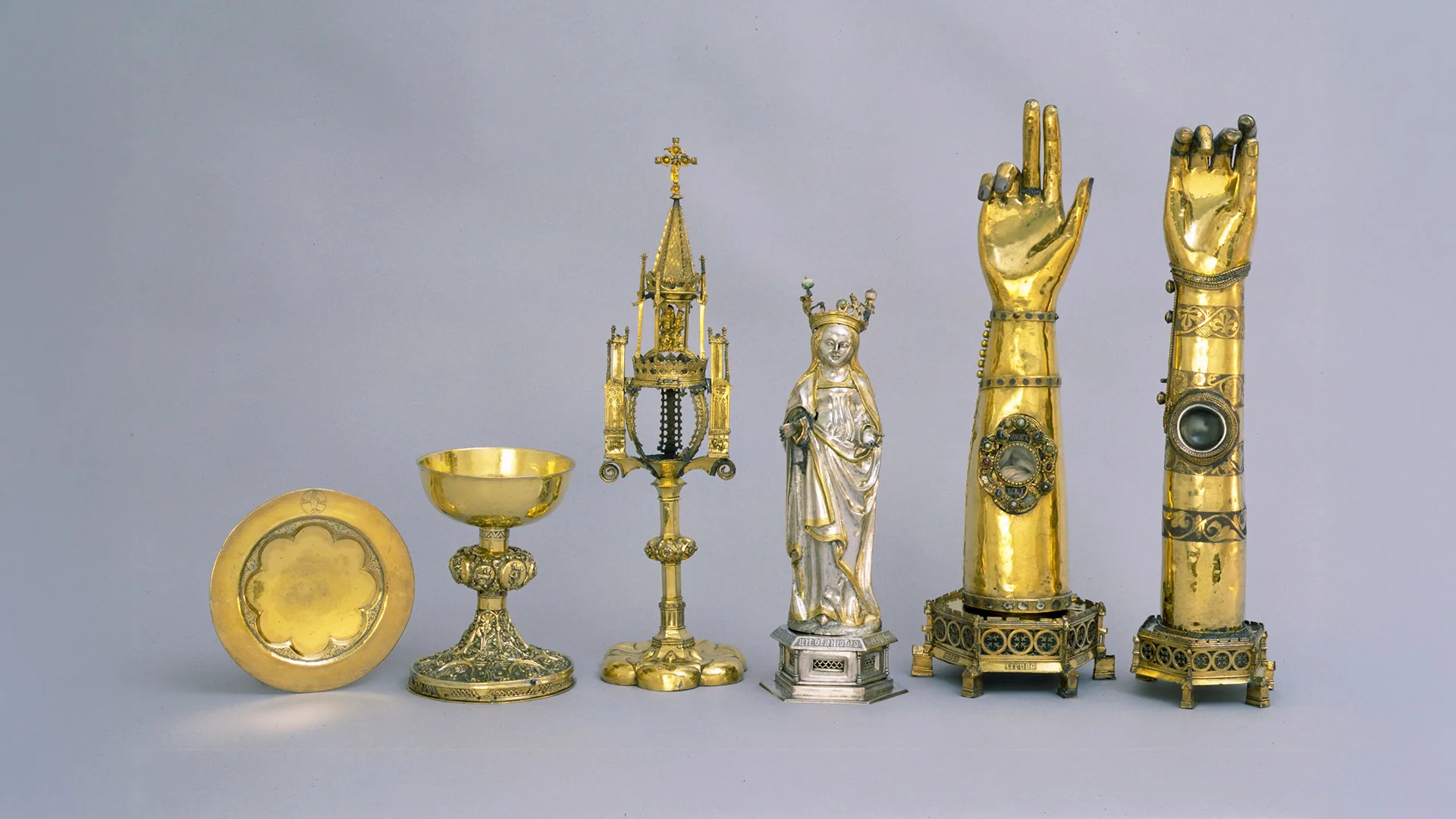The Skeleton Tells of a Brutal Fate
Viking Age
AD 800 – AD 1100
Middle Ages
AD 1050 – AD 1520
Modern Age
AD 1520 – AD 2025
In 1950, workers at a gravel pit near Ajmunds Bridge in Mästerby parish on Gotland uncovered a skeleton. An archaeologist was called to the site, but since there were no grave goods to help with dating, it was assumed to be from the Iron Age. Without further investigation, the skeleton was sent to the Swedish History Museum. There, an osteologist – a specialist in human and animal bones – was able to make fascinating discoveries about how this person had lived.
The Woman's Cranium
Disabled from Childhood
The unusually well-preserved bones belonged to a young woman, aged between 18 and 20 when she died. She had suffered from a disease that affected both her elbows and her left thighbone. The joint surfaces of the elbows were deformed, limiting her mobility, and her left leg was significantly shortened with an outward-angled knee joint, which caused her to limp.
The exact illness remains uncertain, but her health appears to have been badly affected at around the age of two or three, perhaps the time she first fell ill. Signs on her teeth indicate that she suffered malnutrition at that age. In an effort to compensate for her disability, she likely overstrained herself later in life, leading to pain and shinbone inflammation.
The Woman's Leg Bones
You can tell that the woman was limping because her left thigh bone is too short and the knee is misaligned.
Beheaded
The manner of her death was also unusual. A deep cut across the fourth cervical vertebra speaks for itself: she was beheaded. But why did she meet such a grim fate? Was she murdered, or formally executed? Did her disability play a role? We will probably never know the answers, but by studying the history of the place where she was buried, we may come closer to the truth.
The Woman's Neck Vertebra
Valdemar Atterdag’s Campaign
Ajmunds Bridge is associated with King Valdemar Atterdag of Denmark and his campaign on Gotland. It was here, on a hot summer’s day in late July 1361, that the Danish army of some 2,000 men clashed with the hopelessly outnumbered Gotlandic peasant force. The peasants’ only chance was to flee. Our young woman may have been among those unable to escape, but there is another, more likely explanation.
Law and Order
In the Middle Ages, Gotland had three courts of law with different jurisdictions: the local court, the district court, and the “landsting”. The landsting, also known as the Gutnalting, was the island’s highest legislative, judicial and decision-making authority. And one of the two landstings on Gotland lay at Ajmunds Bridge.
It was here that people accused of serious crimes, offences grave enough to warrant the death penalty, were tried. For reasons of decency, women were not hanged, as onlookers might see up under their skirts. Instead, other methods were employed: beheading was one, burial alive – to be put “quick into the earth” – was another. It is here, then, that we should probably look for the context of the young woman’s death.
A Life Story
It is likely that the anonymous skeleton, first dated to the “Iron Age”, in fact belongs to a much later period. Beheading is a typically medieval punishment, and those sentenced to death were considered guilty of crimes so severe that they were denied burial in consecrated ground. As a result, they were also believed doomed to eternal torment after death. Considering the role of the site and the fact that she was beheaded, it seems far more likely to place her in the Middle Ages.
Yet many questions remain. What crime might she have committed? How did her contemporaries view her disability? Could she even have been branded a witch? A future C14 dating of the skeleton could provide a firmer answer to when she lived and help place her in her proper historical context. What is beyond doubt, however, is that she endured many hardships that left permanent marks on her bones.
